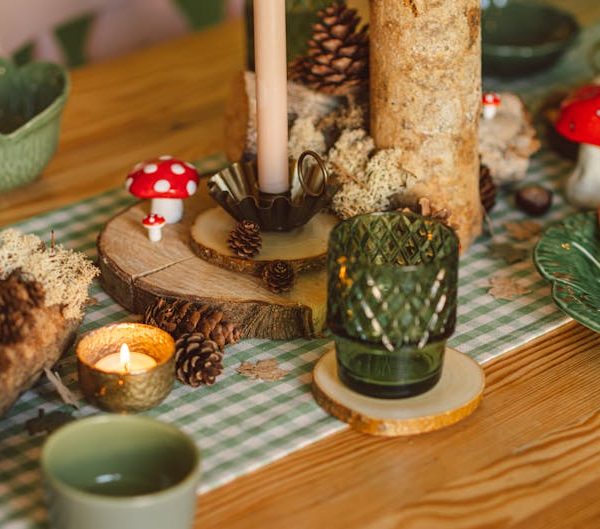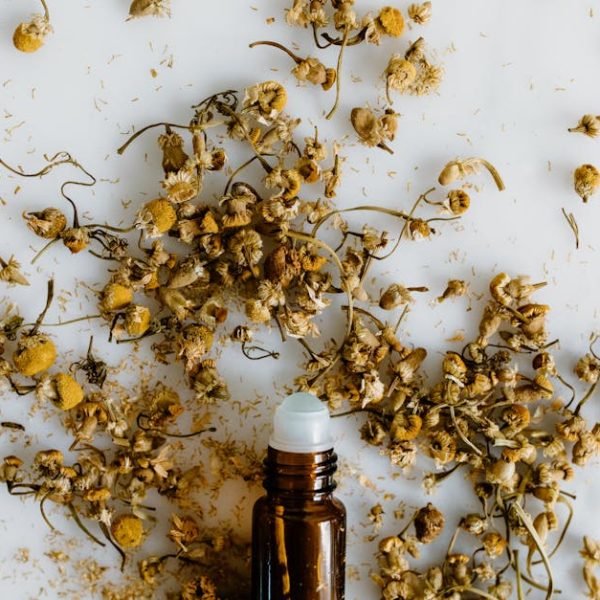Fennel and anise, despite sharing a similar flavor profile, are not the same. They are two distinct plants belonging to different species, each carrying its unique characteristics and uses. The eclectic world of herbs and spices is filled with enchanting flavors, some of which can often be confusing due to similar profiles – but with a little knowledge, one can appreciate and differentiate the nuances and individualities of each plant.
Overview of Fennel and Anise
Fennel, known scientifically as Foeniculum vulgare, has its roots in the Mediterranean region. Incorporated into many classic recipes, it possesses a sweet, slightly licorice-like taste. Not only does fennel enriches cooking, but it also has a longstanding reputation in traditional medicine for promoting digestion and suppressing appetite.
Anise, or Pimpinella anisum, also originates in the Mediterranean and Middle East. It gets its fame from its distinct, sweet flavor that resembles licorice. Anise imparts a comforting, warm depth to many food and beverages, and it’s also renowned for its digestive and antimicrobial properties.
Key Facts about Fennel.
- Botanical name: Foeniculum vulgare
- Origin: Mediterranean
- Key culinary uses: Soups, stews, roasts, salads
- Major nutritional components: Vitamin C, Fiber, Potassium, Manganese
Key Facts about Anise
- Botanical name: Pimpinella anisum
- Origin: Mediterranean, Middle East
- Key culinary uses: Baked goods, spirits, teas
- Major nutritional components: Iron, Calcium, Fiber, Magnesium
Physical and Flavor Differences Between Fennel and Anise
Despite beide sweet and licorice-like in taste, the physical characteristics of fennel and anise are quite distinguishable. Fennel is a stout plant with feathery leaves and yellow flowers, producing fragrant, greenish-brown seeds. Anise is a flowering plant with simple leaves and tiny white flowers, its seeds being small, oval, and brownish-gray.
When we dive into the flavor profiles, fennel’s flavor is subtly sweet with a hint of aniseed, making it versatile in culinary applications. Anise, on the other hand, has a stronger, more potent licorice flavor, which shines through in baked goods and beverages.
Style ‘Fennel vs. Anise – Physical Characteristics
- Plant structure: Fennel – Stout with feathery leaves and yellow flowers, Anise – Simple leaves with tiny white flowers
- Seeds: Fennel – Fragrant and greenish-brown, Anise – Small, oval and brownish-gray
- Color: Fennel – Green (leaves), Yellow (flowers), Anise – Green (leaves), White (flowers)
Flavor profile
- Fennel – Subtle, sweet, hint of aniseed
- Anise – Potent, sweet, strong licorice flavor.
Overlapping flavor profiles contribute to the common confusion between these two plants. However, their distinct characteristics and uses set them apart in the culinary and medicinal world.-
Culinary Uses of Fennel and Anise
Every part of the fennel plant from root to seed is edible, and each offers a different flavor profile and culinary use. Fennel bulbs and stalks are often used in soups, stews, roasts, and salads. The leaves or ‘fronds’ can be used as a garnish or incorporated into sauces, while the seeds are used for seasoning and pickling.
Anise, mainly known for its seed, imparts a sweet, licorice flavor to a wide range of dishes. The seeds are popular in baked goods, such as cookies and bread. They’re also used in a variety of spirits and liqueurs, like Ouzo, Raki, and Sambuca. Additionally, anise leaves can be used in salads or as a garnish.
Fennel’s culinary uses
- Bulb: Soups, stews, roasts, salads
- Stalks: Soups, stews
- Fronds: Sauces, as garnish
- Seeds: Seasoning, pickling
Anise’s culinary uses
- Seeds: Baked goods, liqueurs
- Leaves: Salads, as garnish
- In beverages: Teas, infusions
- In sweets: Cookies, bread
Nutritional and Medicinal Aspects of Fennel and Anise
Fennel is packed with essential nutrients like Vitamin C, fiber, and potassium. These nutrients offer multiple health benefits, including improved digestion, enhanced immune function, and cardiovascular health.
Anise seeds are a good source of iron and calcium. These essential minerals are crucial for blood production and bone health, respectively. Anise is also traditionally used for its digestive and antimicrobial properties.
Fennel vs. Anise – Nutrition Facts
- Calories: Fennel – 31Kcal/100g, Anise – 337Kcal/100g
- Protein: Fennel – 1.2g/100g, Anise – 18g/100g
- Fiber: Fennel – 3.1g/100g, Anise – 14.6g/100g
- Vitamins: Fennel – Vitamin C, Anise – Niacin, Pyridoxine
- Minerals: Fennel – Potassium, Manganese, Anise – Iron, Calcium, Magnesium
Pro Tips: Health benefits
- Fennel benefits: Improved digestion, enhanced immune function, cardiovascular health
- Anise benefits: Digestive and antimicrobial properties, aids in blood production and bone health
Misconceptions and Common Confusions about Fennel and Anise
Fennel and anise are often erroneously used interchangeably due to their similar licorice flavors. However, they distinctly differ in their physical characteristics and flavor strength. While they can sometimes be substituted for each other in recipes, the differing potencies of their flavors need to be considered.
When to use fennel or anise in recipes
- Use fennel when you want a subtle sweetness and a delicate hint of licorice.
- Use anise for a potent, sweet licorice flavor.
Key Differences ‘Fennel vs Anise’
- Plant structure: Fennel – Stout and yellow flowers, Anise – Simple leaves and white flowers
- Seeds: Fennel – Fragrant and greenish-brown, Anise – Small, oval and brownish-gray
- Flavor: Fennel – Subtle and sweet, Anise – Potent and sweet
Pro Tips: Identifying fennel and anise by characteristics and flavors.
- Fennel’s mild sweetness can be recognized by its subtly sweet, slightly aniseed flavor.
- Anise’s strong flavor shines through primarily in baked goods and beverages.
With these insights, you can now confidently navigate through the subtleties that set fennel and anise apart. Enjoy exploring their unique elements and enrich your culinary journey with these multifaceted spices.
Key Takeaway:
- While both fennel and anise originate from the Mediterranean region, they belong to two different species.
- Fennel is renowned for its sweet, slightly licorice-like taste, whereas anise is often recognized for its stronger, more potent licorice flavor.
- Physical attributes differentiate the two spices: Fennel being a stout plant with yellow flowers, and anise a plant with simple leaves and tiny white flowers.
- Despite the shared and often mixed-up flavor profiles, fennel and anise each lend themselves to particular and unique culinary and medicinal uses.
Recognizing and appreciating the distinctness of fennel and anise can greatly enhance your culinary adventures. Their variations in flavors and uses not only add depth to your dishes but also contribute to a healthier diet due to their respective nutritional benefits. Explore, experiment, and experience the rich world of flavors with confidence and creativity.
FAQs
Q: If I don’t have fennel seeds, can I use anise seeds as a substitute?
A: Yes, while anise seeds have a more potent flavor, they can be used as a substitute for fennel seeds. However, remember to adjust the quantity to avoid overpowering the dish.
Q: Can I eat the leaves of the anise plant just like fennel?
A: While less common, anise leaves can be consumed. They’re often used in salads or as a garnish for their delicate, sweet licorice flavor.
Q: Are the medicinal benefits of fennel and anise the same?
A: While both are known for their digestive benefits, fennel is also known to enhance immune function and support cardiovascular health, while anise boasts antimicrobial properties and aids in blood and bone health.
Q: Beyond the licorice flavor, what are the flavor differences between fennel and anise?
A: While they share a licorice-like flavor, fennel has a subtle, sweet, and slightly aniseed flavor, and anise has a potent, sweeter licorice flavor.
Q: What cuisines often use fennel and anise?
A: Fennel is used extensively in Mediterranean cuisines, while anise is popular in Mediterranean, Middle Eastern, and Asian cuisines, particularly in baked goods and beverages.
We hope you found these insights enlightening. Don’t be shy to share this article with other culinary enthusiasts or reach out for more food and spice explorations on our site!





